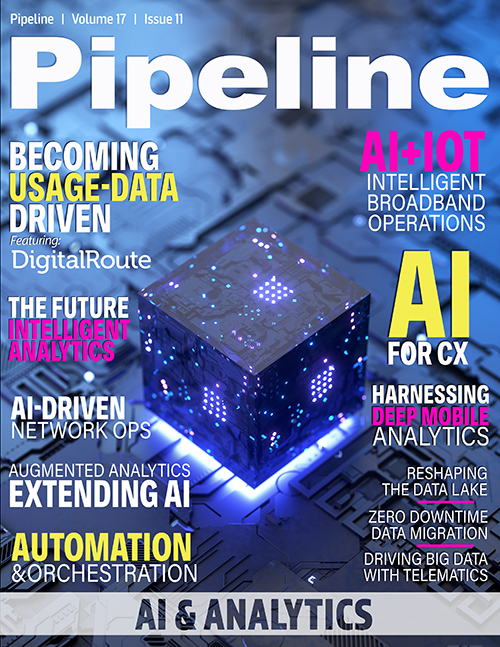Harnessing the Potential of Deep Mobile Analytics
This analysis of real-time customer behavior enables the building of customer profiles that can more accurately determine likely customer behavior, including predictive buying behavior, and deliver clear insight into the best moment to engage the customer and promote ease of purchase. To deepen the analysis, adding one more layer—the past behavior of the customer—creates a much richer picture of an individual customer and increases operators’ ability to anticipate and meet individual needs. For example, analysis may show that certain customers have been targeted with a specific TikTok app offer three times in the past and didn’t respond, so a different offer may be generated. Alternatively, the offer could be presented at a different time, such as outside of office hours, to maximize the chance of attention, engagement, and conversion.
Deep dive: continuously optimizing algorithms
The algorithms running on customer interaction datasets are engaged in continuous learning cycles, always looking for better opportunities to engage with the customer. Deep mobile analytics (DMA) involves experimenting, testing, and identifying the most preferred engagement methods from all possible channels. To train the algorithm to look for similar customers with similar behavioral patterns, communications are sent to a large group (perhaps 100,000 customers) via a variety of different channels—Rich Communication Services (RCS), SMS, voice and so on. Based on the results, algorithms are built that can decide the right channels and optimal timing for communications to groups of customers.To deliver optimal results, analytics service providers are now harnessing the very latest and most sophisticated models developed by data scientists, including neural networks, Random Forest machine learning techniques, vector analysis, mathematical formulae, and multi-dimensional models. Data is put through all available models, as part of a continuous testing and learning process to see which delivers the best results, often incorporating an element of handcrafting and refinement to ensure that the error and confidence rates fall within defined parameters. In practice, if the objective set by the operator is to maximize the number of customer transactions to a set figure (for example, 100,000 transactions per day at a revenue rate of $2), the models must be trained to a high confidence level and run until the expected conversion rate is hit and the increased figure is delivered. Profit maximization will be different for each operator in each geographic region—factoring in credit card rates, varying costs per transactions and so on—so any modelling can be automatically adjusted to account for different volume and pricing considerations.
Fully automated model for digital inclusion
Interestingly, these techniques are now being leveraged for financing new handsets. Data analytics can examine a customer database to flag users with a handset that is more than three years old and identify upgrade opportunities, including an offer to pay in installments, based on automated customer profiling and financial scoring. For customers without a credit history or even without a bank account, operators now can assess creditworthiness based on an automated analysis of operator-held data (for example, whether a long-term customer is demonstrating a steady top-up pattern). This opens the possibility for offering small loans and credit services to less bancarized markets and customers that simply wasn’t possible in the past. From identifying unbanked customers who would benefit from mobile wallets to ensuring users have access to up-to-date handsets, operators and data analytics providers are today at the nexus of enabling digital and financial inclusion—the global push toward which has assumed even greater urgency and importance in the post-COVID world.
Harnessing deep mobile analytics provides a measurable impact for operators in terms of maximizing revenues and creating greater customer satisfaction and loyalty, and for mobile customers themselves, with the ability to benefit from relevant, timely offers that meet their exact needs. Moreover, crucially, deep mobile analytics can be accomplished by analytics technology providers with no impact on customers’ data privacy, an increasingly pressing concern for mobile users. All data belongs to the operator, and any data analytics results linked to the customer are hashed, anonymized, and encrypted, mitigating the risk of privacy breaches and ensuring the integrity of customers’ personal data at all times.
So, what is the vision for the future? Mobile transactions, including top-up, will move globally to online and fully automated. We can already see that happening, driven by the powerful combination of enabling technologies such as bancarization and smartphones and the use of deep mobile analytics to better address the requirements of individual customers. Increasingly, the data goldmine within the network will be connected to other industries such as banking and retail. In tandem, operators will be looking to harness their network data to optimize their own internal operations, from optimizing network rollout and capacity management to radio planning and security.
One thing we can be sure of is that solutions will continue to be built that use mobile network data in a much more intelligent way to revolutionize the customer experience, expand revenue streams across interconnected industries, and push forward the digital transformation of our businesses and communities.



















